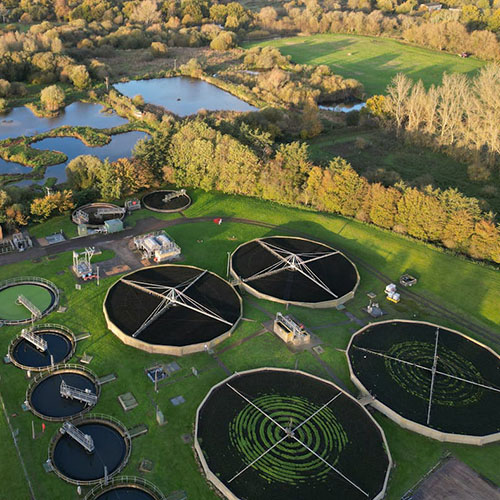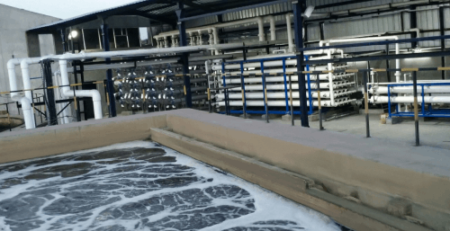Smart Sewer Treatment Plants
Introduction
Urbanization, population growth, and environmental regulations are placing significant pressure on municipalities to upgrade their wastewater treatment infrastructure. Traditional Sewer Treatment Plants (STPs), while effective in basic pollutant removal, often suffer from inefficiencies, high operational costs, inconsistent compliance, and reactive maintenance strategies.
Enter Smart Sewer Treatment Plants—digitally enhanced facilities that integrate Internet of Things (IoT) devices, Artificial Intelligence (AI), advanced sensors, automation, and cloud platforms to optimize the treatment process, ensure regulatory compliance, and reduce environmental impact.
Key Features and Technologies of Smart STPs
1. Advanced Monitoring and Instrumentation
– Sensors: Real-time monitoring of flow, pH, temperature, DO, ORP, ammonia, nitrate, turbidity, BOD, COD, TSS.
– Level and flow transmitters: For influent, effluent, and sludge handling systems.
– Smart flow meters and analyzers: Installed at critical points for continuous data acquisition.
2. Automation and Control
– PLC/SCADA Systems: Enables automatic process control, alarm management, and remote operations.
– Distributed Control Systems (DCS): Used in large-scale plants for coordinated operations.
– Variable Frequency Drives (VFDs): To optimize blower, pump, and motor operations.
3. AI & Machine Learning
– Predictive modeling: For biological load changes and equipment failure.
– Process optimization: AI adjusts aeration, dosing, and retention times in real-time.
– Anomaly detection: Early identification of abnormal process behavior.
4. IoT and Cloud Integration
– Remote monitoring: Supervisors can access plant data from anywhere.
– Cloud-based analytics: Long-term data storage, trend analysis, and performance benchmarking.
– Mobile apps and dashboards: For operators, engineers, and municipal authorities.
5. Digital Twin Technology
– Virtual replication of the STP for simulation, fault analysis, and optimization.
– Helps plan upgrades and test control strategies digitally before implementation.
Process Areas Benefiting from Smart Technologies
Influent and Preliminary Treatment:
– Flow balancing using smart level controls.
– Screen maintenance alerts through vibration and blockage detection.
Primary and Secondary Treatment:
– Real-time monitoring of sludge blanket level and settling characteristics.
– Automatic control of aeration to meet DO setpoints, saving energy.
– AI-based ML models to manage sludge age and F/M ratio dynamically.
Tertiary Treatment and Disinfection:
– Automation of filters backwash cycles based on turbidity or pressure loss.
– Online residual chlorine, UV transmittance, or ozone dosing control.
Sludge Treatment:
– Real-time solids concentration monitoring.
– Automated polymer dosing and dewatering control.
– Predictive maintenance for digesters and dryers.
Benefits of Smart Sewer Treatment Plants
1. Improved Treatment Efficiency
2. Energy Optimization
3. Water Quality Compliance
4. Operational Cost Reduction
5. Real-Time Data for Decision-Making
6. Predictive Maintenance
7. Resilience to Shocks and Emergencies
8. Environmental and Social Impact
Smart Integration with City Infrastructure
Smart Grids and Utilities:
– Integration with energy and water utilities for demand response and shared data.
Smart Water Reuse:
– Treated water is automatically routed to storage tanks or recharge pits with quality checks.
Decentralized Physical Infrastructure Networks (DePIN):
– STPs can be linked to a blockchain for decentralized monitoring, micro-incentives, and transparent auditing.
Challenges in Implementing Smart STPs
High Capital Costs: Upfront investment in sensors, PLCs, software, and communication systems.
Data Security: Protection from cyberattacks is critical for plant integrity.
Skilled Workforce: Need for trained staff to manage automation, AI, and IT systems.
Legacy Integration: Integrating smart components with older infrastructure can be complex.
Connectivity Issues: Especially in remote or underserved regions, reliable network access is essential.
Case Studies
1. Bangalore, India: Uses SCADA and IoT-enabled sensors to ensure compliance and reduce power costs.
2. Tokyo, Japan: Utilizes AI to manage rain events and variable loads with minimal human intervention.
3. Copenhagen, Denmark: Employs digital twins and AI to prevent combined sewer overflow (CSO) events.
Future Trends in Smart STPs
– AI-Driven Autonomous Plants
– Blockchain for Compliance
– Integration with Satellite and Weather Data
– Community Monitoring Apps
Conclusion
Smart Sewer Treatment Plants are not just a technological upgrade—they represent a paradigm shift in how municipalities and industries manage wastewater. With their real-time intelligence, automation, and data-driven processes, Smart STPs ensure reliable compliance, minimize environmental impact, and enable resource recovery. As urban centers pursue sustainability and resilience, investing in smart STPs will be essential for shaping the water-secure cities of the future.










